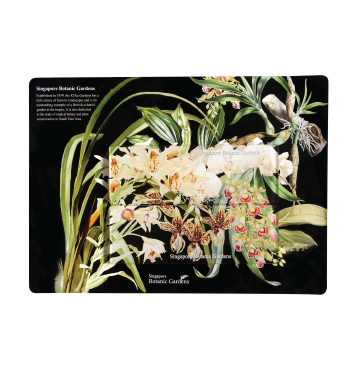Simply the Zest
As the saying goes, “When life gives you lemons… make lemonade!” But did you know that besides the common lemon we are all familiar with, there are various other plants in Singapore that have ‘lemon’ in their names?
Learn more about these plants and we have some tips for some of them that can even be grown in home gardens.
Lemon

Lemon juice is widely used in our food and drinks. The plant produces purplish white flowers that are mildly fragrant.
Photo credit: Shi Biying
Lemon (Citrus limon) juice is widely used in many foods and drinks. The outer most layer of the rind, or zest, is used to flavour pies, cakes, and other sweets. Its leaves can be used in cooking as well. Its young foliage is initially purple, gradually turning green as the plant matures. It produces mildly fragrant purplish white flowers that grow in clusters or solitary.
Lemon trees are adapted to and grow best in Mediterranean climates. In humid, tropical climates, they become prone to fungal and algal diseases, produce lower quality fruit with coarse peels, and tend to adopt an unwieldy growth habit. To help improve growth, use well-drained soil and ensure full sun conditions.
Water Lemon

The Water Lemon gets its name because its yellow fruits resemble lemons. The plant also produces pretty purple and white flowers.
Photo credit: Pauline Tay and Soh Weijing
The Water Lemon (Passiflora laurifolia) is named for its smooth, yellow fruits that are shaped like lemons. The edible flesh is watery and pleasant to taste. This slender woody vine grows best with lots of water and while it tolerates semi-shaded conditions, it produces more fruit under full sun.
The plant originates from South America and produces pretty fragrant purple and white flowers that are made up of two overlapping rows of long, thin petals with the inner row consisting of about 40 petals.
Lemon Swirl

Photo credit: Vicky Lim Yen Ngoh
The Lemon Swirl (Lantana camara) is free flowering in the tropics with bright yellow flowers in rounded clusters. It is ideal as a nectar plant for attracting butterflies.This cultivar is fast and easy to grow, and able to tolerate a wide variety of soil types. It is also an excellent choice for water-conscious gardeners as it is highly drought tolerant.
It produces fleshy, pitted fruits known as drupes that are initially bluish green and then darken to purplish black. The unripe fruits are toxic upon ingestion, so it is best to prevent fruiting by promptly removing spent flowers. This cultivar has a compact, bushy form, so only light pruning is needed.
Lemon Basil

Photo credit: Vicky Lim Yen Ngoh
The Lemon Basil (Ocimum × africanum) has white to cream-coloured tubular flowers arranged along a spike inflorescence. Its leaves have a lemon and basil taste and aroma, which can be used in salad dressing, pesto and dishes with fish or chicken. They can also be steeped in hot water to make herbal tea.
The plant produces smooth, light green leaves that are elliptic in shape, with pointed tips. This annual or short-lived perennial herb can grow up to 45 cm tall.
Lemon Bacopa

The Lemon Bacopa has fleshy edible leaves and produces tiny light blue flowers.
Photo credit: Justin Chua Qi Zhang
The Lemon Bacopa (Bacopa caroliniana) has fleshy leaves densely arranged in pairs, producing a lemon-like scent when crushed. Its tiny, light blue flowers are composed of four to five petals each.
Often planted in aquariums, it can be grown submerged or emergent. This slow-growing, low maintenance plant grows in freshwater or brackish water (salty water that is less salty than seawater).
Its leaves are edible and are sometimes used as a garnish to dishes. Moreover, according to folk medicine, a leaf infusion can be taken to treat respiratory problems, like chronic cough and shortness of breath.
Variegated Lemon Thyme

Photo credit: Vicky Lim Yen Ngoh
The Variegated Lemon Thyme (Thymus × citriodorus 'Variegata') has small, egg-shaped leaves that have a dark green centre and an irregular yellow to cream margin.
The leaves when crushed produce a lemony fragrance which is strongest before flowering. They are best used fresh and can be added to soups, sauces, salads, and meat or fish dishes.
This short, woody perennial can grow up to 25 cm tall with a spreading growth habit.
Gardeners' Day Out
Participate from the comfort of your home with online activities such as talks and demonstrations, video tutorials of activities and promotions offered. Enjoy Gardeners’ Day Out online at www.nparks.gov.sg/GDO.
You can also enjoy videos of our Gardening With Edibles Masterclass Series. They are conducted by NParks horticulturists, focusing on unique and challenging edibles across different plant families.
Learning More
If you are heading to our green spaces, do the right thing and be socially responsible. Maintain a safe distance from other park goers and keep to not more than two person in a group, with no intermixing between groups. Always wear a mask except when you are engaged in strenuous exercise or when consuming food, drink or medication.
Do check out the visitorship levels of our parks using our safe distancing portal before you head down and avoid the ones with high visitorship. Learn about some simple do’s and don’ts when visiting our Nature Reserve and Nature Parks here.
Visit NParksSG, our refreshed YouTube Channel that serves as a one-stop repository for close to 300 video resources. It also provides you a platform for existing and future digital outreach including DIY gardening and related crafts, virtual tours of our green spaces, and livestream events.
Whether you are an amateur gardener or a seasoned horticulturist, starting a home garden or a community garden, there are plenty of useful information and guides here for your gardening hobby.
For more information about the flora and fauna found in Singapore, please visit NParks Flora and Fauna Web.
If you like what you read, follow us on Facebook, Instagram and Telegram to get the latest updates.
Text by Charlotte Tan





Have views or comments on this article? Let us know via this form. If you would like to give us feedback on any other areas relating to our parks and gardens, please submit via https://www.nparks.gov.sg/feedback